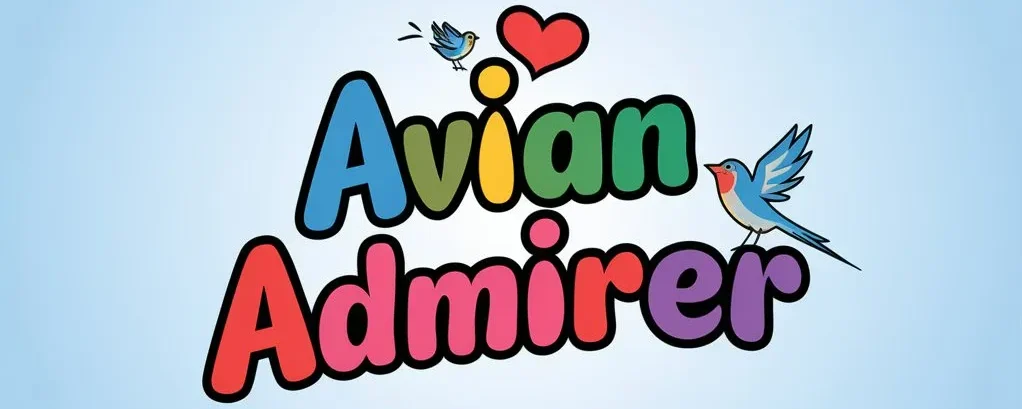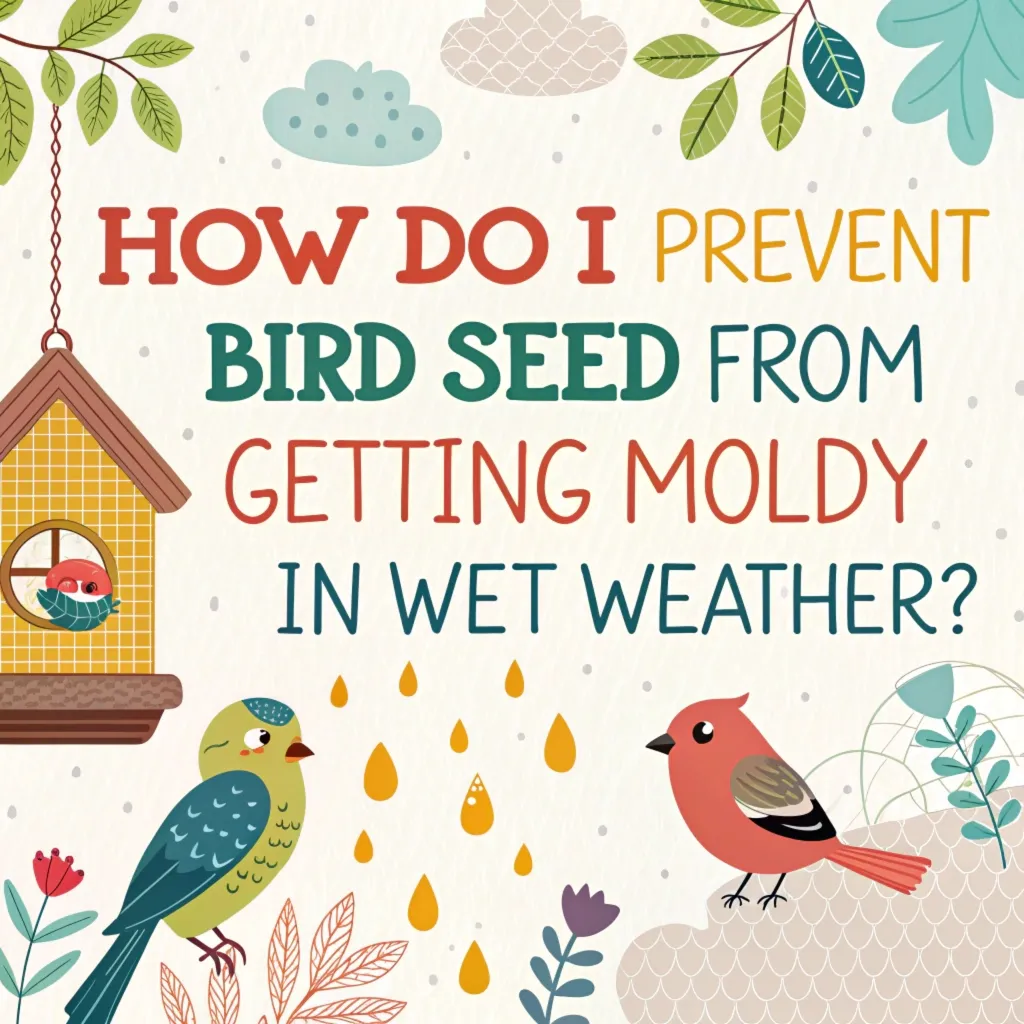How Do I Prevent Bird Seed from Getting Moldy in Wet Weather?
Wet weather poses a challenge for bird enthusiasts who want to keep their feathered friends well-fed. Moisture can quickly turn bird seed moldy, making it unsafe for birds to eat. This guide provides practical solutions to protect your bird seed from dampness and maintain its quality.
By following these tips, you can ensure that your backyard birds have access to fresh, nutritious food even during rainy seasons.
From proper storage techniques to smart feeder choices, we cover all aspects of keeping bird seed dry and mold-free.
Whether you’re a seasoned bird watcher or new to backyard bird feeding, these strategies will help you create a safe and inviting environment for your avian visitors.
Key Takeaways
- Store bird seed in airtight containers to prevent moisture infiltration
- Use feeders with wide lids or rain guards to shield seed from precipitation
- Clean bird feeders regularly to prevent mold growth
- Monitor seed quality and discard any moldy or wet seed promptly
- Consider weather-resistant feeder designs with drainage holes
- Rotate seed stock to ensure freshness and prevent spoilage
- Place feeders in sheltered locations when possible
- Buy smaller quantities of seed during wet seasons to reduce storage time
- Inspect seed bags for signs of moisture before purchasing
- Freeze excess seed for long-term storage and freshness
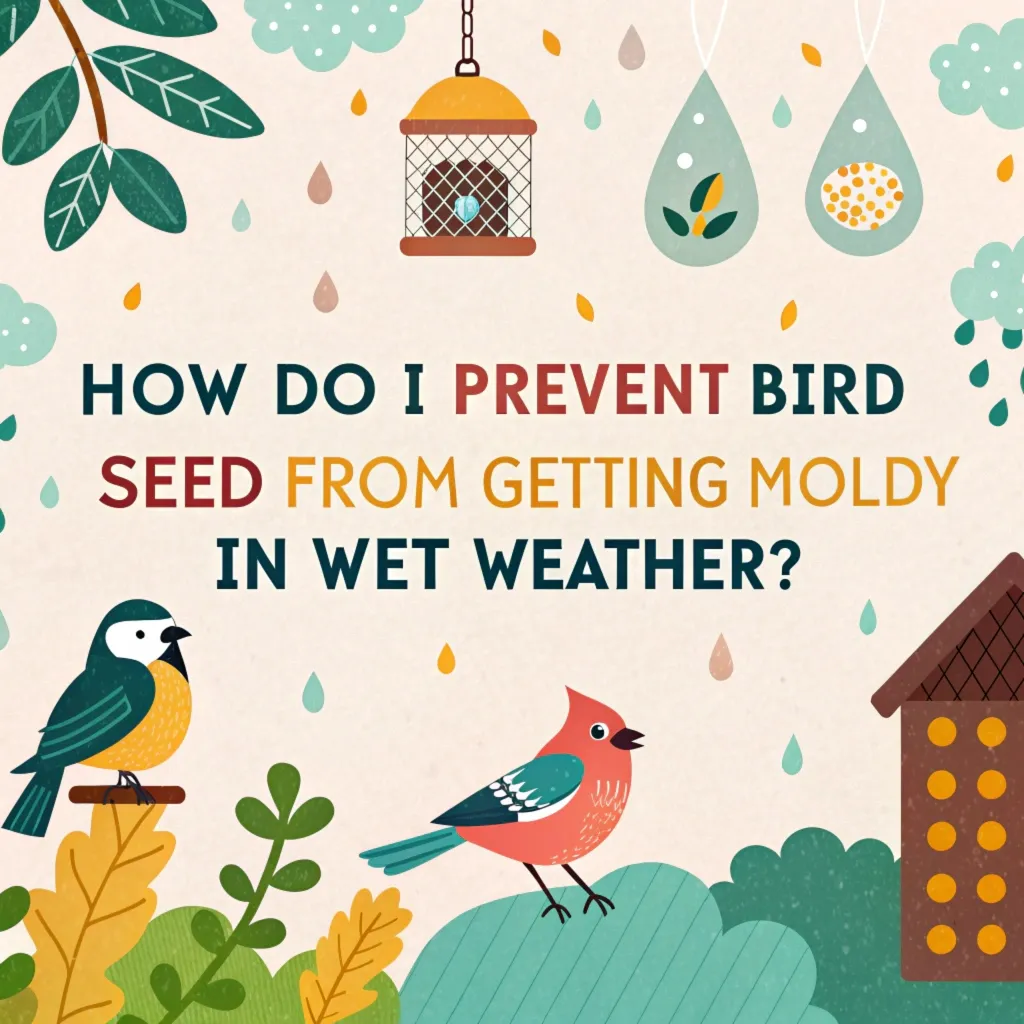
Choose Appropriate Storage Containers
Selecting the right storage containers is essential for keeping bird seed dry. Airtight containers made of sturdy plastic or galvanized metal effectively prevent moisture from reaching the seed.
Opt for containers with tight-fitting lids to create a strong seal against humidity. For larger quantities, consider using plastic bins or metal garbage cans with secure lids.
Proper container selection is a critical step in maintaining seed quality. The right container acts as a barrier against moisture, pests, and contaminants.
When choosing a container, consider factors such as size, material, and seal quality. Larger containers are ideal for bulk storage, while smaller ones offer convenience for daily use.
Transparent containers allow for easy visual inspection of seed quality, helping you identify issues before they become problematic.
Implement Proper Storage Practices
Store bird seed in a cool, dry place away from direct sunlight and heat sources. A garage, shed, or basement can serve as ideal storage locations.
Avoid storing seed in areas prone to dampness or temperature fluctuations. Rotate your seed stock regularly, using the oldest seed first to maintain freshness.
Effective storage practices are fundamental to preserving seed quality. The environment where you store your bird seed can significantly impact its longevity and nutritional value.
Temperature control is crucial, as extreme heat or cold can degrade seed quality. Humidity management is equally important, as excess moisture can lead to mold growth.
By implementing these storage practices, you create an optimal environment for seed preservation, ensuring that your feathered visitors receive high-quality food throughout the year.
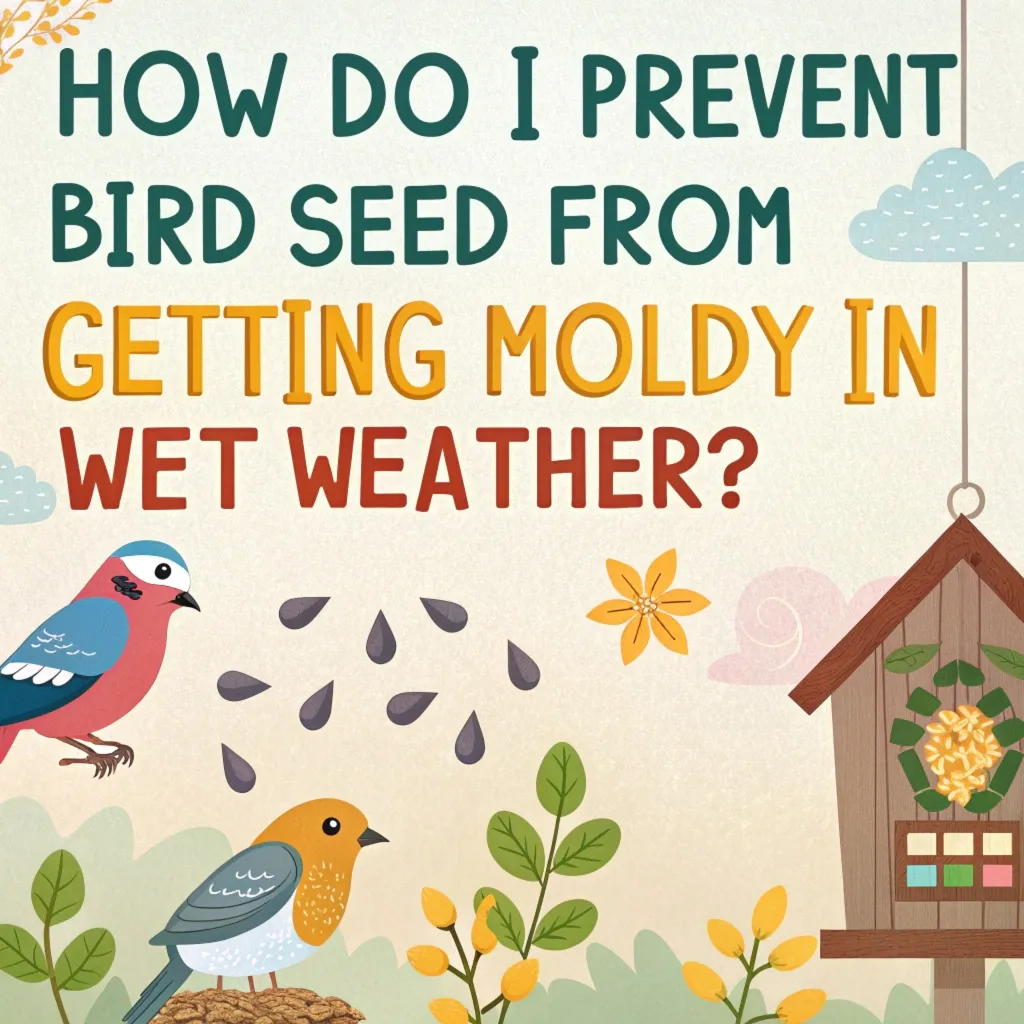
Utilize Weather-Resistant Feeders
Invest in feeders designed to withstand wet weather. Look for models with wide, overhanging lids or built-in rain guards to protect the seed from rain and snow. Some feeders feature drainage holes in their seed trays, allowing excess moisture to escape and preventing seed from becoming waterlogged.
Weather-resistant feeders play a crucial role in maintaining seed quality during wet conditions. These specialized feeders are engineered to minimize water exposure while still allowing easy access for birds.
Features like sloped roofs and water-repellent materials help deflect rainwater, keeping the seed dry. Some advanced models even incorporate ventilation systems to promote air circulation, further reducing the risk of moisture buildup.
By choosing the right feeder design, you can significantly extend the freshness of your bird seed, even in challenging weather conditions.
Add Protective Accessories
Enhance your existing feeders with rain guards or baffles. These accessories act as umbrellas for your feeders, shielding the seed from precipitation. Position baffles slightly lower than you would for squirrel prevention to maximize rain protection.
Protective accessories serve as an additional defense against wet weather, enhancing the performance of your bird feeders. These add-ons are particularly valuable for adapting standard feeders to more challenging weather conditions.
Rain guards and baffles not only protect against direct rainfall but also help reduce wind-driven rain from reaching the seed.
By strategically positioning these accessories, you create a more hospitable feeding environment for birds, encouraging them to visit your feeders even during inclement weather.
Maintain Clean Feeders
Regular cleaning is crucial for preventing mold growth. Clean your bird feeders at least once every two weeks, increasing the frequency during warmer months. Use a mild soap and water solution or a mixture of one part vinegar to four parts water to thoroughly clean all feeder surfaces.
Feeder hygiene is a critical aspect of bird care that often goes overlooked. Clean feeders not only prevent mold growth but also help reduce the spread of diseases among bird populations. The cleaning process should be thorough, addressing all surfaces, crevices, and feeding ports.
Proper drying after cleaning is equally important to prevent residual moisture. By maintaining a clean feeding environment, you not only protect the seed quality but also contribute to the overall health of your local bird community.
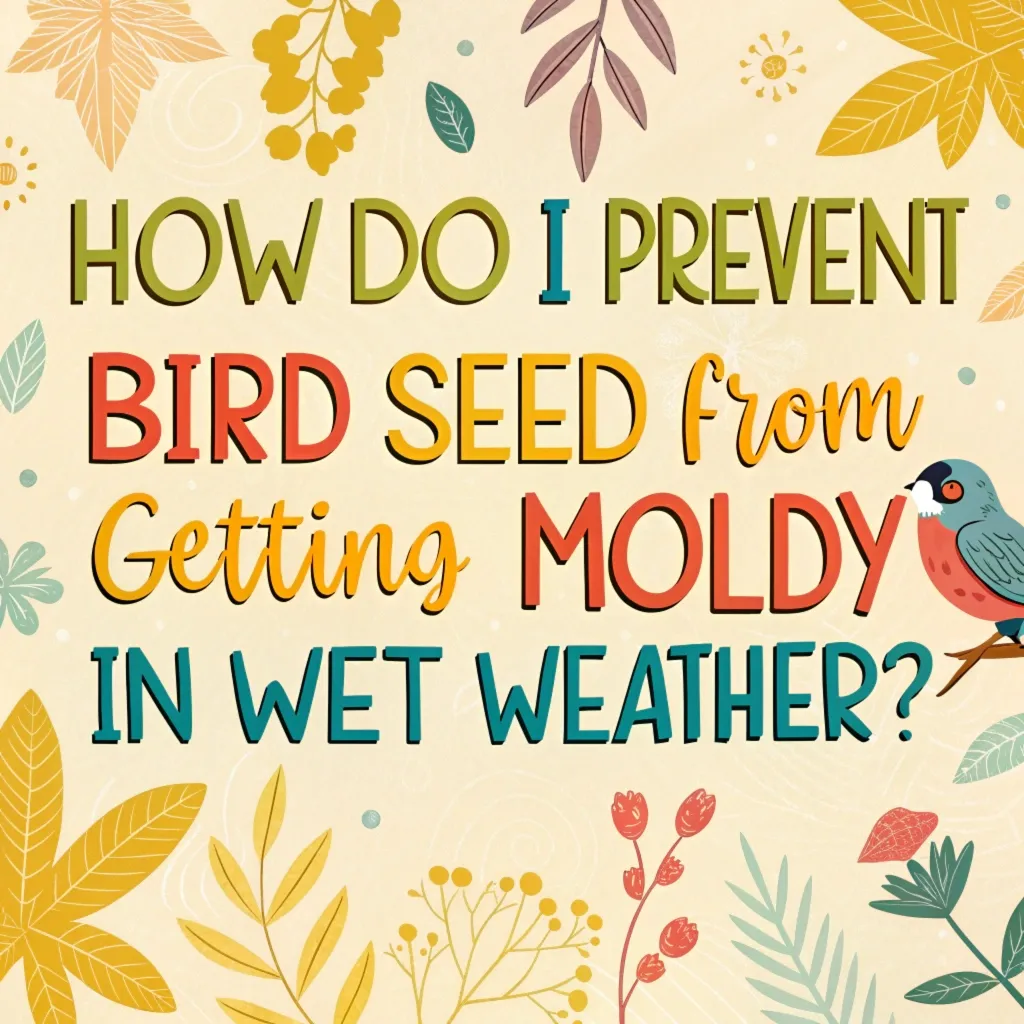
Monitor Seed Quality
Inspect your bird seed regularly for signs of moisture or mold. Discard any seed that appears clumpy, has a foul odor, or shows visible mold growth. Avoid mixing old seed with new to prevent contamination.
Vigilant monitoring of seed quality is essential for maintaining a healthy feeding station. Regular inspections allow you to catch potential issues early, preventing the spread of mold or bacteria.
When examining seed, use multiple senses – look for visual changes, feel for unusual textures, and smell for off odors. Prompt removal of compromised seed not only protects birds but also helps maintain the integrity of your entire seed supply.
This proactive approach ensures that you’re always offering safe, nutritious food to your backyard visitors.
Adjust Feeding Practices
During periods of wet weather, fill feeders with smaller amounts of seed that birds can consume within a day or two. This practice reduces the time seed is exposed to moisture. Consider using seed with hulls, such as black oil sunflower seeds, as they tend to stay fresh longer in humid conditions.
Adapting your feeding routine to weather conditions is a smart strategy for maintaining seed quality. Smaller, more frequent refills not only keep the seed fresher but also encourage you to check on your feeders more often.
This approach allows for quicker detection of any moisture-related issues. Selecting appropriate seed types for wet conditions can also make a significant difference.
Seeds with natural protective coatings are more resilient to moisture, providing a longer-lasting food source for birds during rainy periods.
Create Sheltered Feeding Areas
When possible, place bird feeders under existing shelter such as awnings, covered porches, or dense tree canopies. This natural protection helps keep seed dry during light rain or drizzle.
Strategic placement of bird feeders can significantly reduce moisture exposure. Natural shelters not only protect against rain but also provide birds with a sense of security while feeding.
When selecting a location, consider factors like wind direction and sun exposure. A well-placed feeder benefits from natural air circulation, helping to keep seed dry.
Additionally, sheltered areas often attract a wider variety of bird species, enhancing your birdwatching experience while maintaining seed quality.
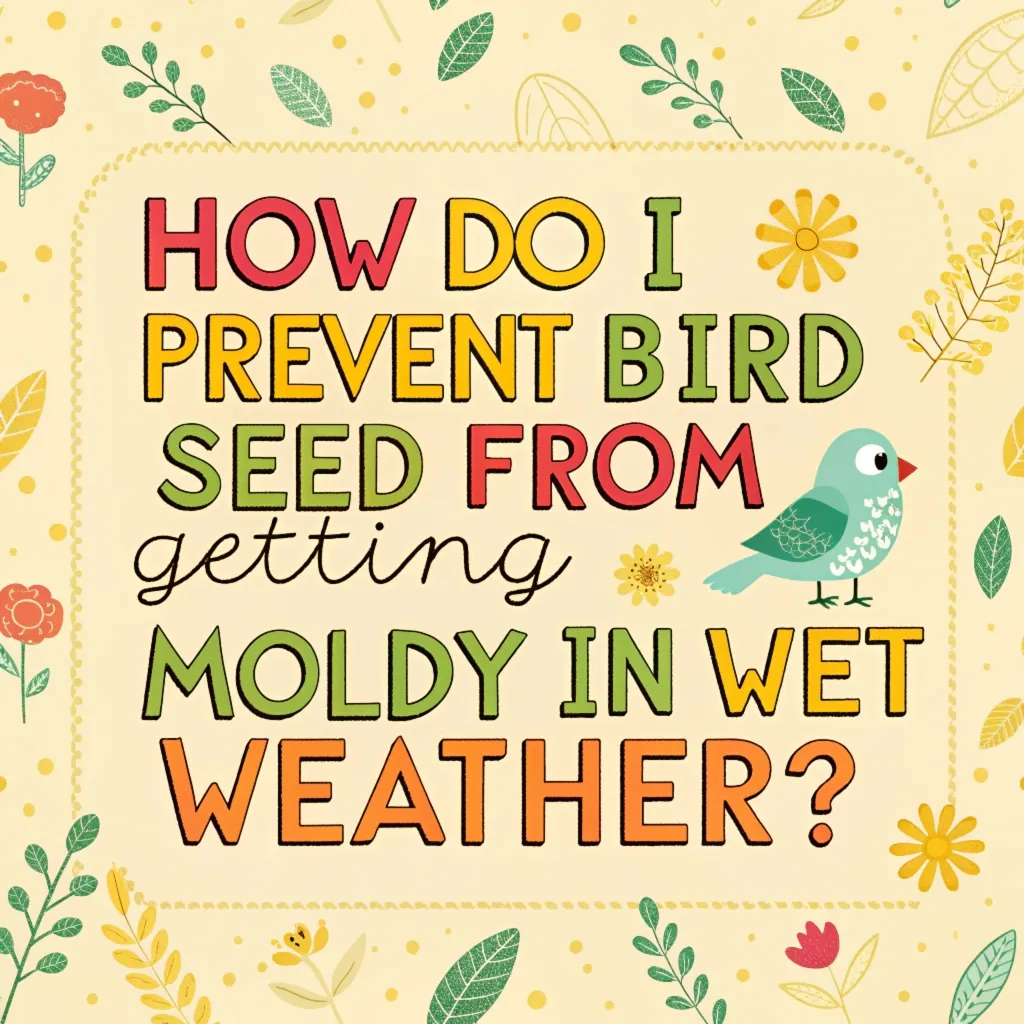
Purchase Fresh, Quality Seed
Buy bird seed from reputable suppliers and inspect bags for signs of moisture or damage before purchasing. Avoid dusty bags, as this may indicate the seed has been stored for an extended period.
Sourcing high-quality seed is the foundation of effective bird feeding. Reputable suppliers typically have better storage practices and faster turnover, ensuring fresher seed.
When selecting seed, pay attention to packaging integrity and seed appearance. Fresh seed should have a clean, uniform look without excessive dust or debris.
Some suppliers offer specialized blends designed for specific weather conditions or bird species, which can be particularly beneficial during wet seasons. Investing in quality seed from the start can significantly reduce the risk of mold issues later on.
Consider Freezing Excess Seed
For long-term storage, consider freezing excess bird seed. Seed can be stored in a freezer for up to one year, maintaining its freshness and nutritional value. Separate seed into smaller portions and seal in freezer-safe bags for convenient use.
Freezing bird seed is an effective method for extending its shelf life, especially when dealing with large quantities. The freezing process halts the growth of mold and bacteria, preserving the seed’s nutritional content.
When freezing seed, it’s important to use airtight, moisture-proof containers to prevent freezer burn. Portioning the seed before freezing allows you to thaw only what you need, reducing waste and maintaining the quality of the remaining frozen seed. This method is particularly useful for seasonal feeders or those who buy seed in bulk to save money.
FAQs
How often should I clean my bird feeders?
Clean bird feeders at least once every two weeks, increasing to weekly cleaning during warm or humid weather.
Can I feed wet bird seed to birds?
Avoid feeding wet or moldy seed to birds, as it can cause illness. Discard any seed that has become wet or shows signs of mold growth.
What’s the best type of container for storing bird seed?
Airtight containers made of thick plastic or galvanized metal are ideal for storing bird seed, as they protect against moisture and pests.
How long can I store bird seed?
Properly stored bird seed can remain fresh for 6-12 months. However, it’s best to use seed within a few weeks to months of purchase for optimal freshness.
Should I store bird seed indoors or outdoors?
Storing bird seed indoors in a cool, dry place is preferable. If outdoor storage is necessary, ensure the container is weather-resistant and placed in a sheltered location.

Ava is a bird enthusiast and nature lover who has spent countless hours observing and learning about the fascinating world of birds. With a passion for sharing her knowledge and inspiring others to appreciate the beauty of birds, Ava writes about her experiences and insights on avianadmirer.com.
